Reality Based Video Game Concept for the Estonian Museum of Natural History
2024 | video game design
I created a museum game concept for the Estonian Museum of Natural History.
The goal of the game is to raise awareness among Estonians, especially children, about the forest thefts occurring in Estonia. Additionally, players will learn how to act when they notice illegal logging.
What I Did
- Research - desk research, interviews
- Observation
- Prototype and testing
Stage
Problem
The Estonian Museum of Natural History asked students from the Estonian Academy of Arts for museum game concepts, and they offered to choose various current environmental issues in Estonia.
I chose to research the topic of forestry and logging.
More About the Process
Desk Research
I read articles on the topic and continuously compiled a dictionary of unfamiliar terms, as I hadn't encountered the subject of forestry much before. I focused my research specifically on the topic of clear-cutting.
Additionally, I went to see the nature documentary "Vara küps" at the cinema. The documentary provided a clear overview of the current state of Estonian forests.
I set the goal of raising museum visitors' awareness of the impact of clear-cutting on the forest ecosystem.

Ideation
I started ideation relatively early, in parallel with the research. Initially, I wanted to design a playful installation rather than a game, and I sketched various concepts.
One of these was a table with cavities where trees would stand upright, allowing players to pull them out, or "cut them down," and "replant" them. A screen next to the table would show the changes occurring in the ecosystem as trees were removed or put back. The player would thus see the connections between different trees and the surrounding plants and other organisms, and discover that the forest's former health and biodiversity do not simply return by replanting a tree.

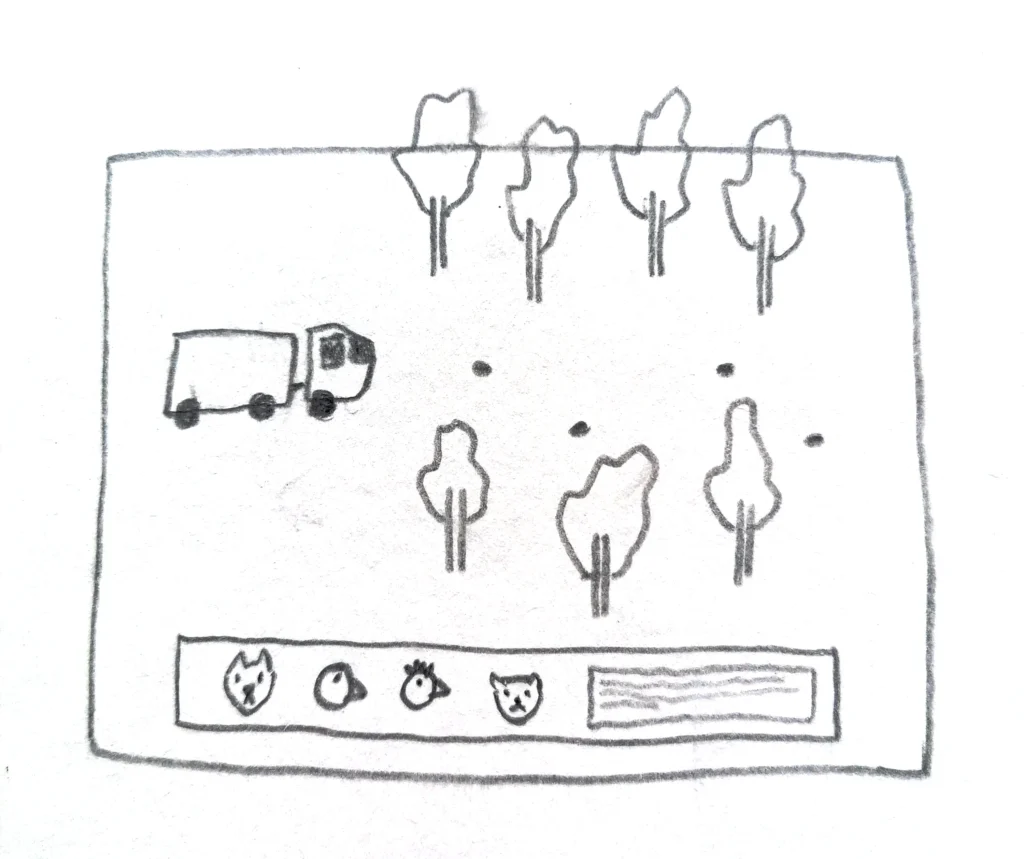
Observation
To validate my ideas, I went to the Estonian Museum of Natural History to get acquainted with its exhibits, installations, and general atmosphere.
My attention was drawn to a group of boys, from around 6th grade, on a class excursion who were restlessly moving around and looking for any activity not related to the museum's display.
I had just reached the wall shown in the photo, where I could vote by putting acorns into a hole, indicating which illustration I associated with urban nature. The boys picked up the acorns and started betting with candies on who could throw them into the holes from the furthest distance.
This situation reminded me of my class trips and what it felt like to be in a museum during middle school. I was left thinking that perhaps there wasn't really anything in the museum specifically targeted at these children. They find it interesting when they can exert themselves, when there's adrenaline, when there's a competitive element.
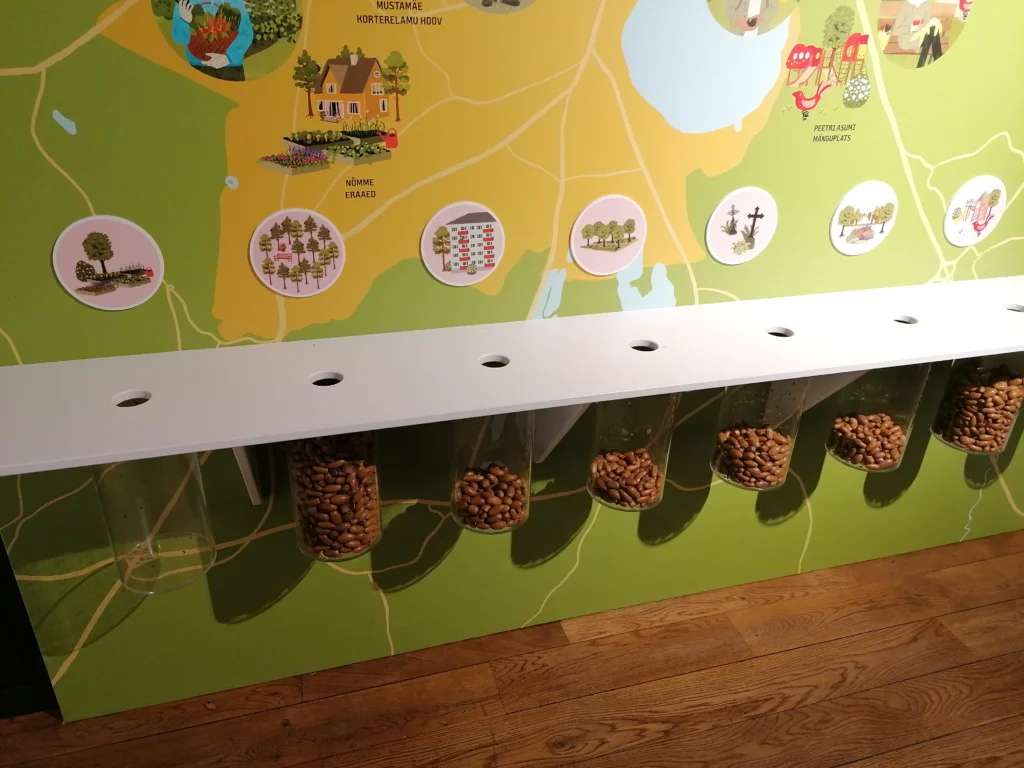
Interview
Fortunately, I had an interviewee readily available at home: my very restless 12-year-old brother, Saamuel, who is also very curious and willing to learn.
I conducted an hour-long interview with him, during which I explored:
- His past memories and experiences in museums.
- What stood out most vividly and what new knowledge he gained.
- When he recalled certain attractions, I asked what he learned from them or what he thought he was supposed to learn.
The most memorable experiences for him were physical simulations, which were made exciting by role-playing. The experience was further elevated when something had to be done against the clock.
For Saamuel, the most exciting way to learn about clear-cutting would be if his mission was to prevent it.
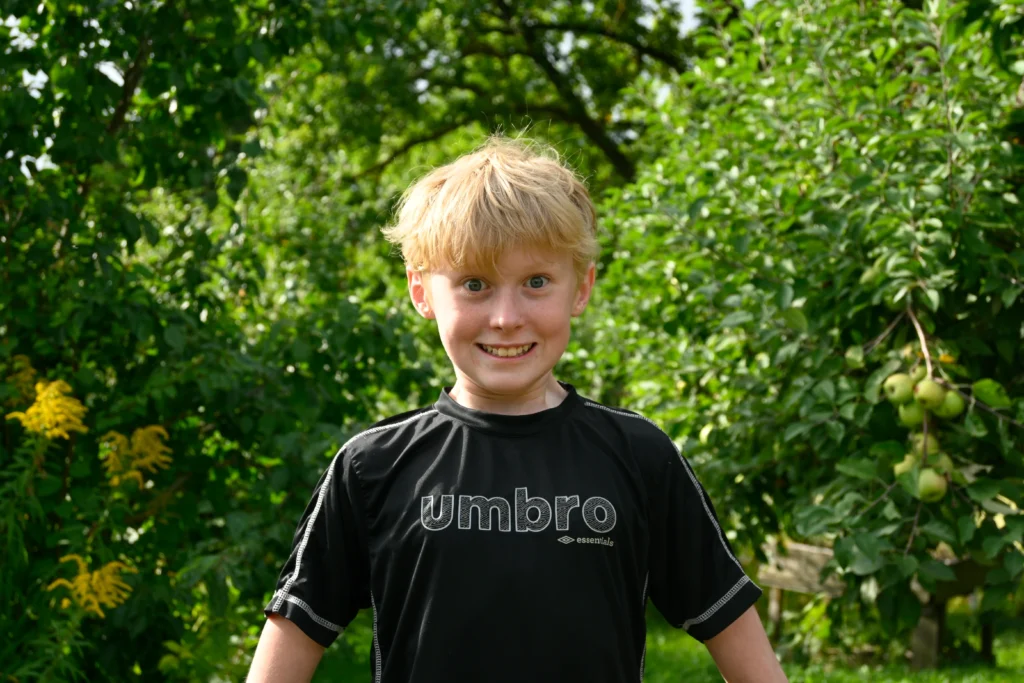
The Idea and Meeting with Mati Sepp
The interview reminded me of a browser game where you drive a police car and have to reach a crime scene in the city before time runs out. I thought I could create something similar that involves stopping logging.
Minu mängu puhul oleks sündmuskohaks raielank. Pakkusin välja, et paremaks rolli sisseelamiseks võiks mäng olla kontrollitav jalgrattaga, mille otsas saaks muuseumis füüsiliselt istuda. Mängija peaks aja peale õige koha leidma ning ebaseaduslikust raiest teatama, et seda peatada.
Lennart Lennuk, a zoologist at the Estonian Museum of Natural History, listened to my idea and recommended meeting with conservationist Mati Sepp. I wrote to him and received a very enthusiastic "yes." To my great delight, he also unexpectedly asked if he could bring along his very interested colleague, Madis Messimas.
A few days later, we sat down at a cafe in Tartu, and I shared my thoughts and showed them the initial mock-ups. Within two hours, I learned a lot about logging, its consequences, and related laws.
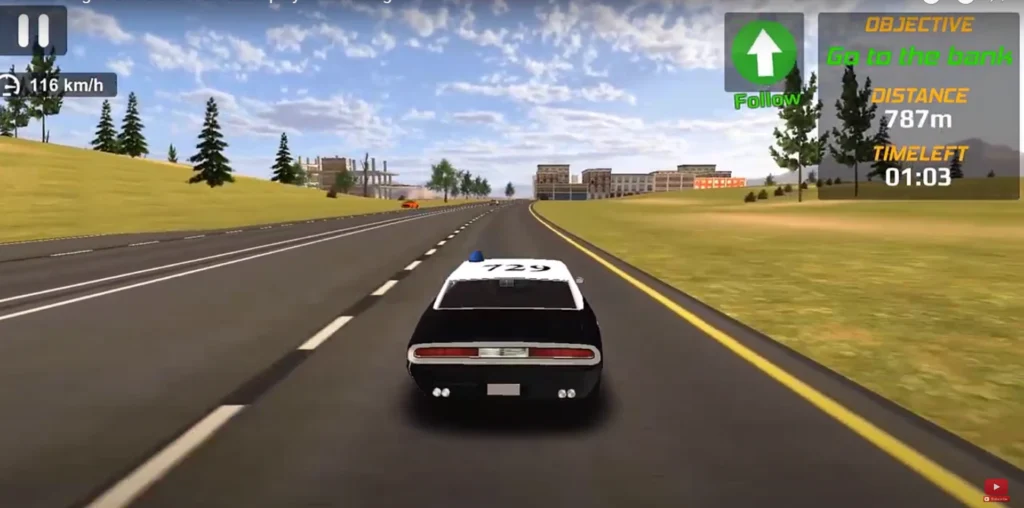
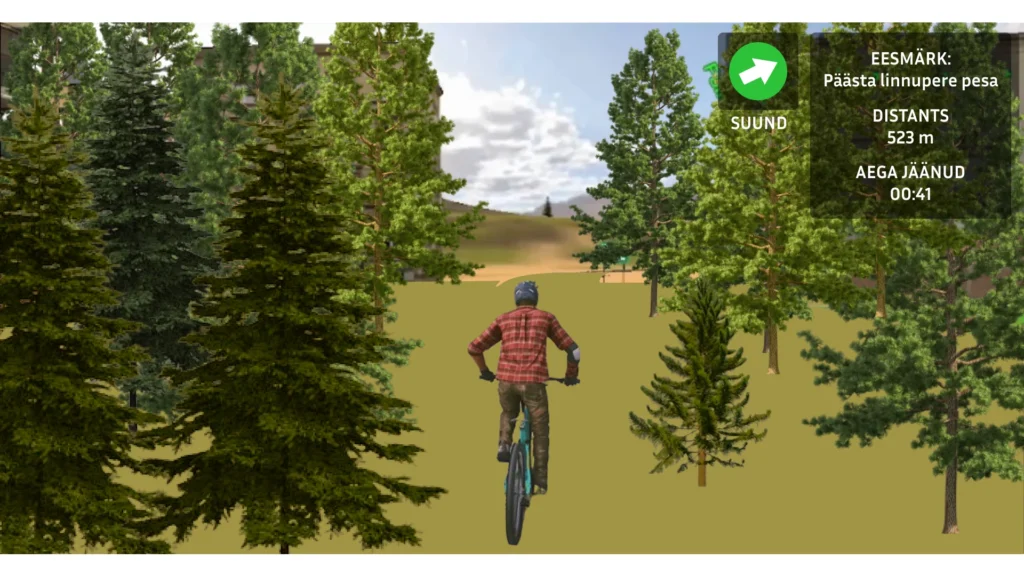

The Work of a Conservationist
I learned that Mati's daily work is exactly what I wanted to base the game on, and that illegal logging is far more common in Estonia than I would have thought.
As part of his job, he travels around Estonia looking for signs of logging – these can include, for example, deep tire tracks at the beginning of a small forest road. If the tracks lead to a logging site, he checks the Forest Portal using coordinates to see if a forest notification applies to the area. To confirm the legality of logging, one must also check things like:
- The depth of ruts left by logging machinery.
- Whether protected species are nesting in the area.
- Whether it's currently nesting season for any local species.
If it turns out the logging is illegal, it must be reported.
However, my ambitious idea of racing a bike through the forest raised some questions. To this, Mati suggested I could shadow him at work.

Shadowing a Conservationist: 8 Hours in the Forest
We met on April 9th and drove to Lahemaa National Park. I spent eight hours there, during which I learned how to spot, identify, and report illegal logging.
Brisk walking in the forest was more challenging and tiring than expected – I paid a lot of attention to movement and considered how to apply this in the game.
I also learned to recognise the environment visually – of course, I had been in the forest many times before, but this was the first time I saw it from a conservationist's perspective. I collected photos of various signs of illegal logging and work methods for the game.
The shadowing experience proved to be the most crucial part of the entire design process – it gave me a very clear understanding of what the game's core loop should be.
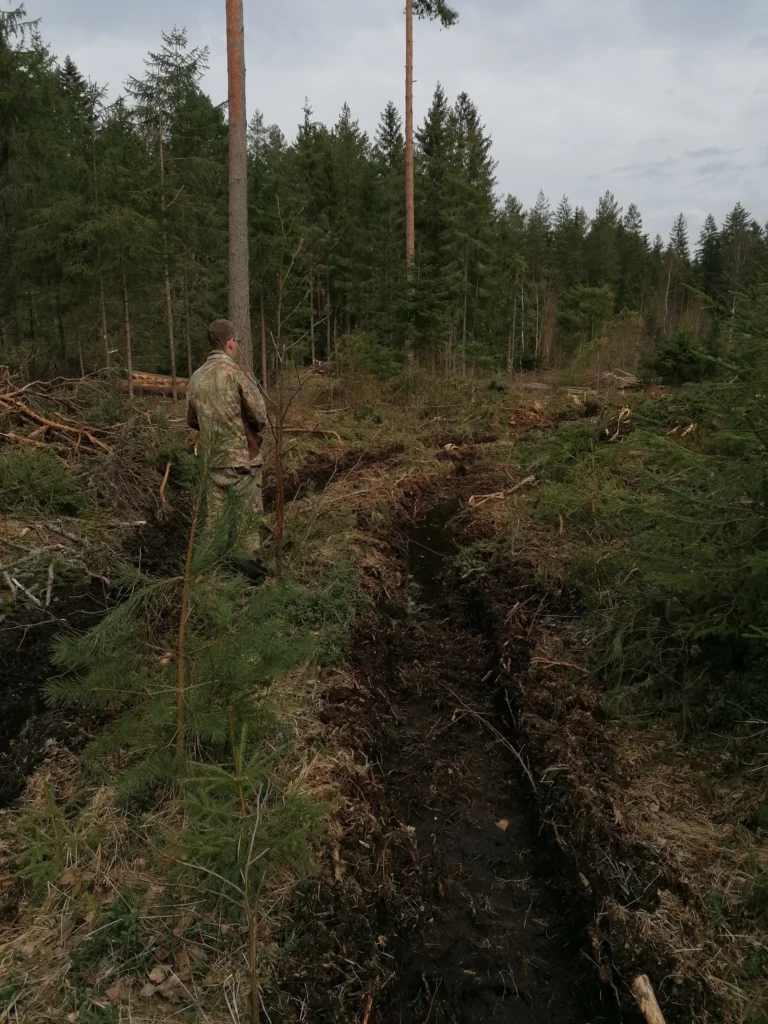
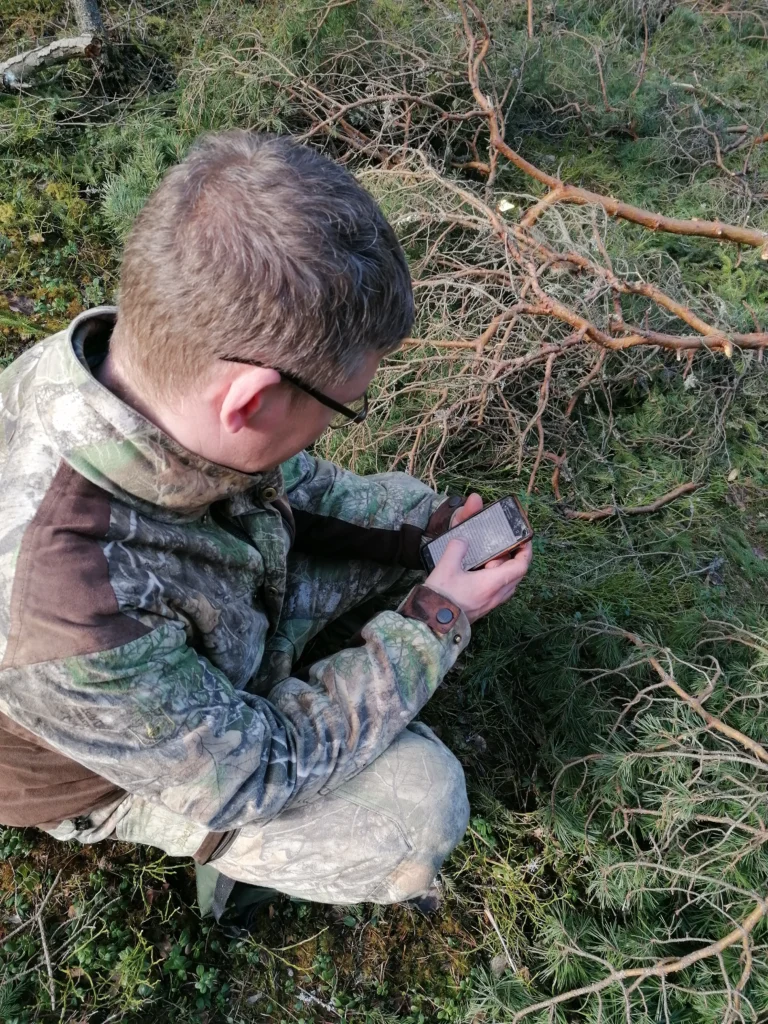

Minecraft and the Stepper Machine
I decided to design the game environment in Minecraft, where I created a forest in a "superflat world," using photos I took in Lahemaa National Park of the area surrounding the logging sites as inspiration.
I carried out the first testing on a elliptical trainer to examine the experience of a game controlled by heavy pedals. I also created areas in the game with softer ground, where the pedals would become harder to push.


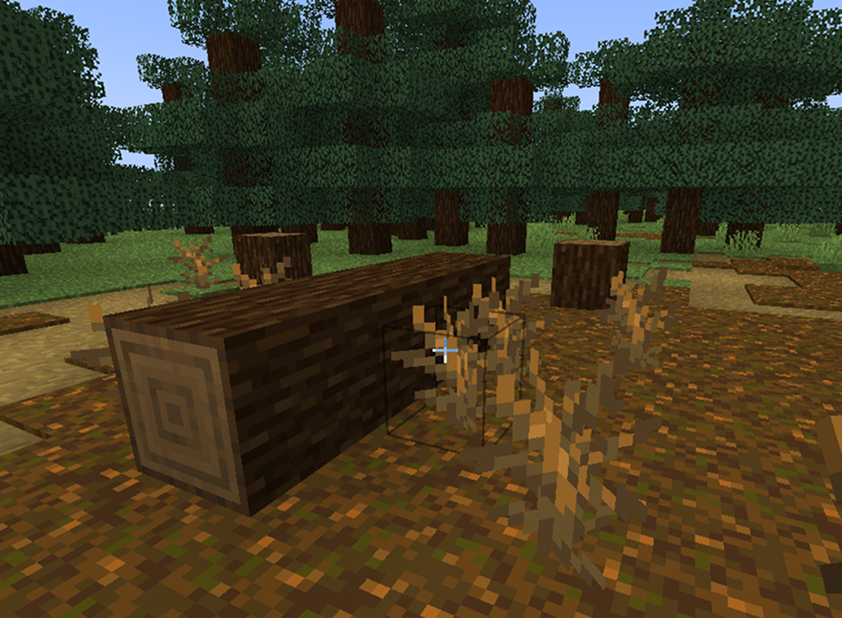
Controllers
From testing, I learned that the idea works, but the prototype doesn't. For the next development, I moved to the stepper machine, which is smaller and doesn't require using hands for movement.
Initially, direction could be changed on the keyboard. After the first test, I brainstormed and designed controllers with thumb buttons for direction control.
To control movement and speed in the museum game, players would step on pedals. Stepping would become more difficult in areas with softer ground.

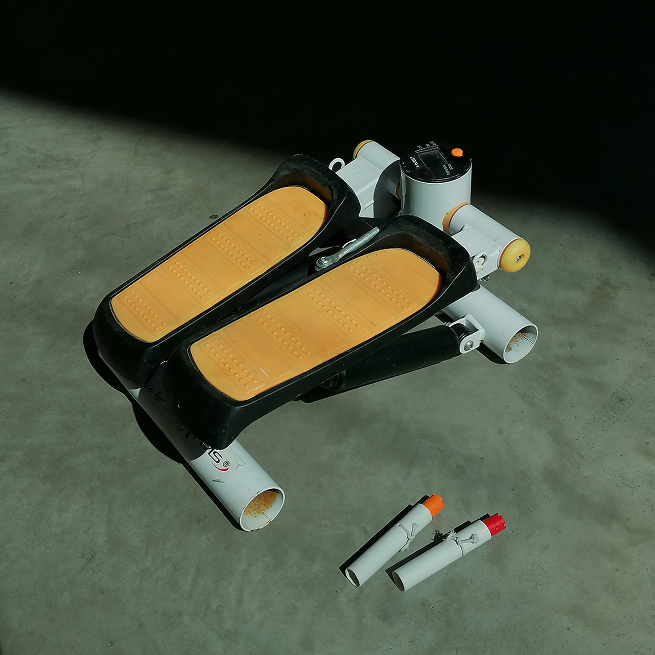

Solution
I created a game concept based on real-life situations for middle school children. The main goal is to offer them an educational activity in the museum that provides enough physical engagement and a sense of competition.
The time-limited challenge and a controller provide players more excitement and immersion.
The objectives of the game are:
- To raise awareness that illegal logging is a common occurrence in Estonia.
- To demonstrate how to act when discovering illegal logging.
- To present an example of a situation where logging is strictly prohibited by law.
When completing the objective, it's important to:
- Avoid stepping on protected species.
- Avoid muddier and wetter areas that slow down movement.
- Stay clear of the working zone of logging machinery upon reaching the site.
Real Life and the Game
Elements from my experience in the forest that I incorporated into the game:
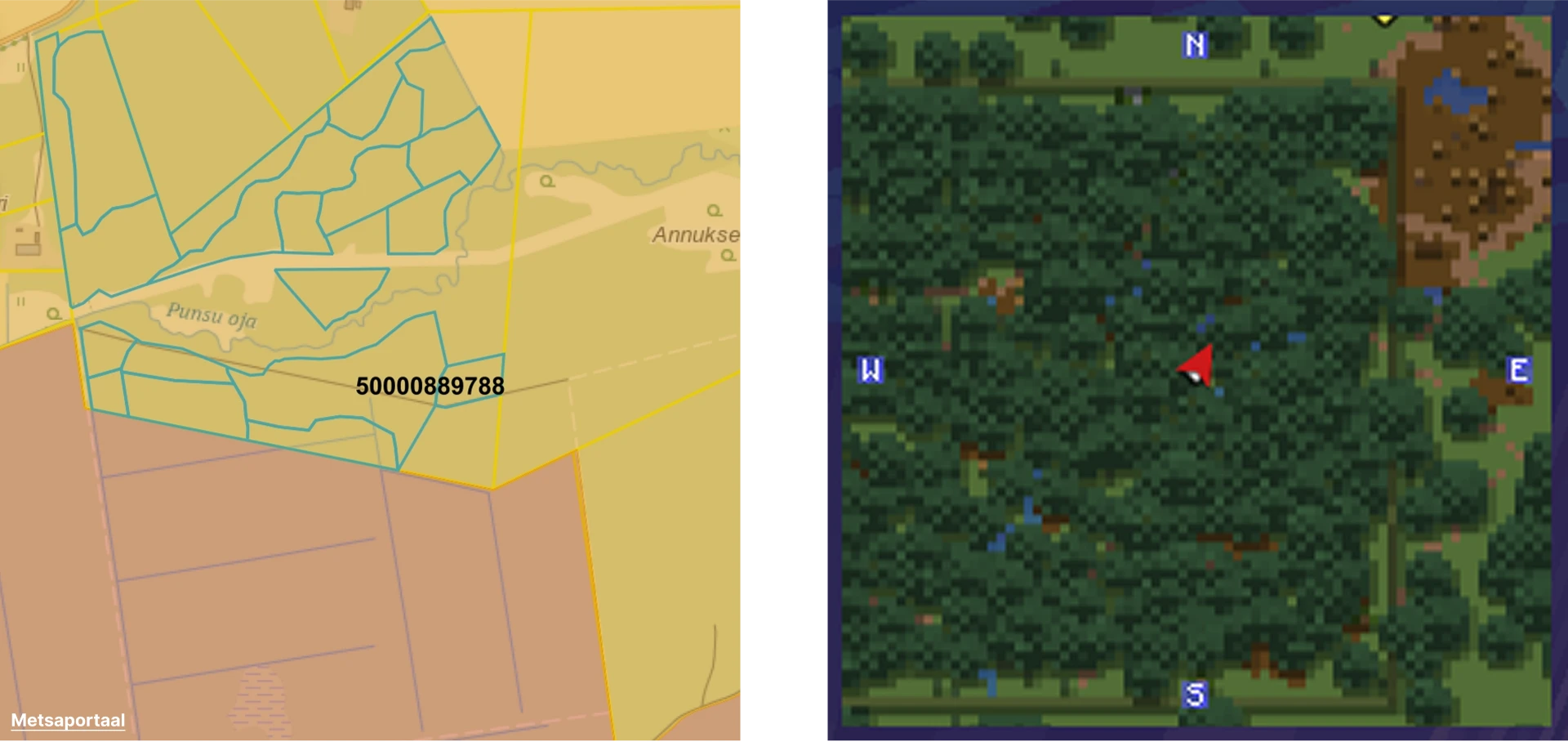
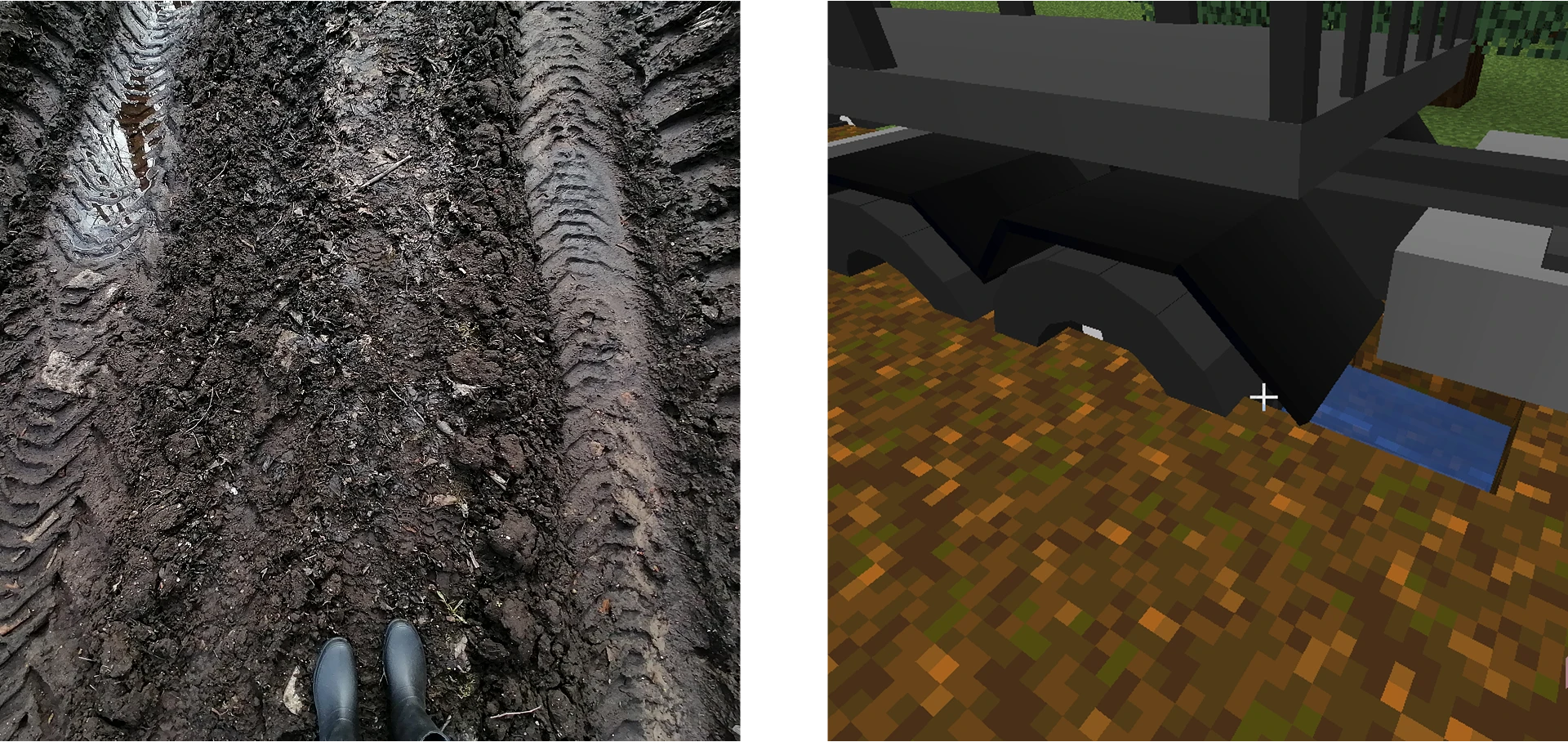






The Game's Opening Scene.
Collage of what the game would look like.
Demo Video of the Prototype
A prototype created in Minecraft to demonstrate the game's content and functionality.
The Parts Used to Create the Opening Scene
